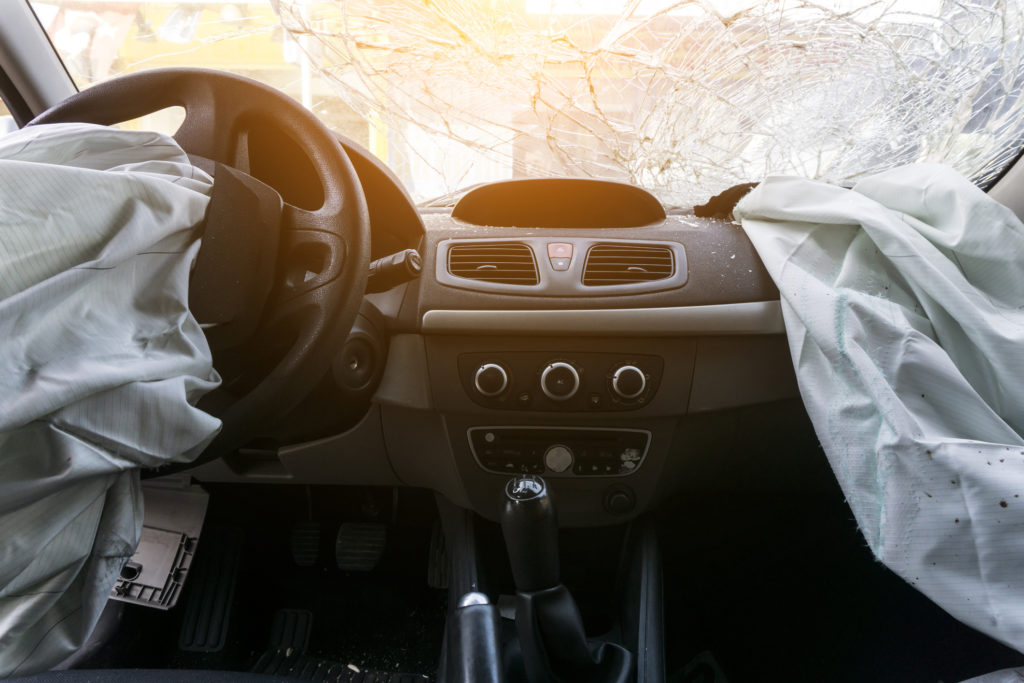
More than 51 million vehicles were recalled due to defective or dangerous parts in 2015. Vehicle failure or degradation is responsible for only about 2 percent of auto accidents. But given that millions of accidents occur every year in the U.S., that’s still tens of thousands of accidents.
If you were injured in an accident you believe was caused – or exacerbated – by a mechanical defect, you may be able to file a product liability lawsuit. These lawsuits are usually challenging and complex cases. Let’s explore what you need to know.
Common vehicle defects that cause or exacerbate auto accidents
Defective seatbelts. During an accident, a seatbelt can unlatch or snap, causing the person to hit the steering wheel or windshield and even be ejected from the vehicle.
Faulty airbags. Some airbags do not deploy at all, resulting in more severe injuries in the event of an accident. Occasionally, air bags deploy when they shouldn’t, which could cause injury or distract you, triggering an accident. More commonly, airbags release too forcefully, causing fractures, burns, lacerations or other injuries.
Brake failure. It’s one of drivers’ worst nightmares: to not be able to stop the vehicle. And it’s not uncommon.
Collapsing roofs. Rollover crashes can be extremely dangerous if the roof collapses or the roll bars break. Roof collapse can lead to traumatic brain injury or even death.
Tire problems. An exploding tire could cause you to lose control of the vehicle and get into a severe accident.
There are countless other potential mechanical problems. Power steering failure can make you lose control of the vehicle or distract you so much you get into an accident. Faulty door latches could cause people to fall out of the vehicle during a collision. Electrical system failure could spark a vehicle fire during a crash.
Proving product liability in an auto accident
In an auto accident claim against another driver, you typically have to prove the other driver was negligent. For example, you may have to prove the other driver was texting or otherwise distracted. However, it would be next to impossible to prove that a vehicle manufacturer was negligent when building your particular part. So usually in product liability cases, you have to prove what’s called “strict liability.”
It’s not necessary to prove the defective part caused the accident. In some cases, you are trying to prove that the faulty product made your injuries more severe. For example, if a broken airbag didn’t cause the accident, but it gave you fractures and burns, you still have a product liability case on your hands.
With strict liability, you will have to prove all of the following:
• The product had an “unreasonably dangerous” defect. This might be because it was badly designed, poorly manufactured, or was broken in shipping.
• You were using the product in the way it was designed to be used.
• You or someone else had not changed the product substantially from the way it was originally sold.
In some instances, there may be many people across the country who have had accidents due to the same product defect that contributed to your accident. You may then be able to join a class action lawsuit against the manufacturer.
Collecting evidence to build a strong product liability case
Proving liability in product liability cases is not easy. Vehicle manufacturers have a lot of money and strong legal teams devoted to disproving product liability cases. The manufacturer will try to demonstrate that you caused the accident through negligent driving. Perhaps they will say you did not properly maintain the vehicle, causing the part to become damaged. If you knew the car part was defective but continued to use it without getting it repaired, they may also say you forfeited your right to a claim.
You will need to provide substantial evidence to support your claim. After the accident, photograph the vehicle, the specific part you believe caused or worsened the accident, the road conditions, and your injuries. Call the police. The officer will generate a report, which will be used as evidence. Seek out witnesses and get their names and contact information. For more detailed information about what to do after an auto accident, read our guide here.
Do not get your vehicle repaired before you consult with an experienced personal injury attorney. You don’t want the evidence of the defect to be removed. An experienced accident and product liability attorney will assess your case and your likelihood of success. He or she can investigate the collision and consult with accident recreation experts and product experts. Your attorney can also subpoena video surveillance footage and information from your vehicle’s black box.
The Lamber-Goodnow Personal Injury Legal Team offers free consultations. There is no obligation and no up-front costs. We get paid only if and when you reach a favorable settlement.
#KC
